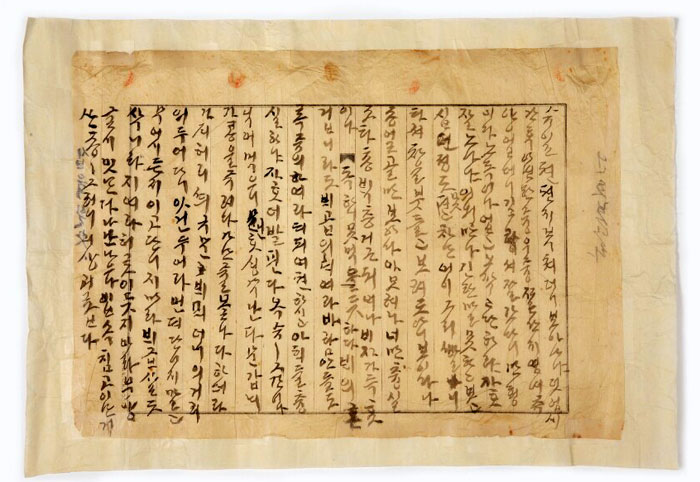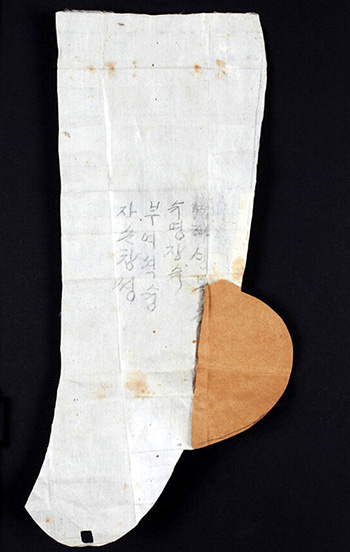
A mother wrote a letter to her daughter in 1946. In the letter, the mother expresses her love for her grown-up daughter who was then married with two children.
“I was sad and worried when you left for your home in the rain that day, but I am happy to hear that you arrived well."
"It was a surprise to see you, but I couldn't have a decent chat or spend enough time together, even though I missed you a lot. It seems like the car came so early.”
"I tried to see you through the window, and I even held on to the window to do so, but I couldn’t. I later saw your face. I'll be okay as long as you're alright.”
This is part of a letter written by a mother to her daughter in 1946. The daughter had been born into and raised by an upper class yangban aristocratic family. One day, the daughter visited her mother without notice. After seeing the daughter, the mother wrote to her with love and consideration.
The National Folk Museum of Korea published an online magazine recently where it revealed the letter and a pattern for a pair of beoseon traditional socks. The two items were donated to the museum in 2012 when the daughter, a Ms. Yi, turned 99-years-old. She was born in 1914 in Yangpyeong, Gyeonggi-do Province. During her century of life, Korea underwent turmoil and some of the most drastic changes, including colonization, war and modernization. Through her donation, the museum hopes to show what the life of an upper class woman was like during this century of ups and downs on the Korean Peninsula.

A pattern for a pair of beoseon socks is donated by Yi Seung-hui. Her mother made the pattern for her by hand, with a moveable paper piece in the heel, and wrote her wishes and hopes on the side of the pattern.
The pattern for the pair of beoseon socks also shows the mother’s love. Beoseon socks are traditional footwear. Yi’s mother custom-made the pattern for her daughter. The pattern is a rough sketch of the basic shape of a pair of beoseon. All members of the family needed many pairs of beoseon to fit their feet, as was tradition. Making a pair of beoseon was one of the most important household chores for a woman in the family. Yi’s mother visited her house to cut out the patter first-hand.
The mother even wrote her wishes for her daughter on the sewing pattern. She wrote by hand in Korean, “Gabinsaeng bokbun, Sumyeong jangsu, Buyeo Syeoksyung, Jason Changnsyeong," or, "갑인생 복본, 슈명장슈, 부여셕슝, 자손창셩."
"Gabinsaeng bokbun” is a combined word between "gabinsaeng," a person who was born in 1914, and "the year of gabin" (갑인, 甲寅), which means a year of the blue tiger. "Bokbun" (복분, 複本) means the sewing pattern itself. "Sumyeong jangsu" shows the mother’s hope for her daughter so that the daughter can be as rich as Syeoksyung, a well-known wealthy Chinese man also known as Si Chong (石崇). “Jason Changnsyeong” (자손 창성, 子孫 昌盛) shows the mother’s wish that her daughter can have many children and have a happy and prosperous family.
Another noticeable part of the pattern is the yellow paper attached at the heel. As this is made of paper, it's easy to make the pair of beoseon according to the shape and size of the feet of each member of the family. This shows the mother’s love and wisdom in helping her daughter.
By Yoon Sojung
Korea.net Staff Writer
Photos: National Folk Museum of Korea
arete@korea.kr